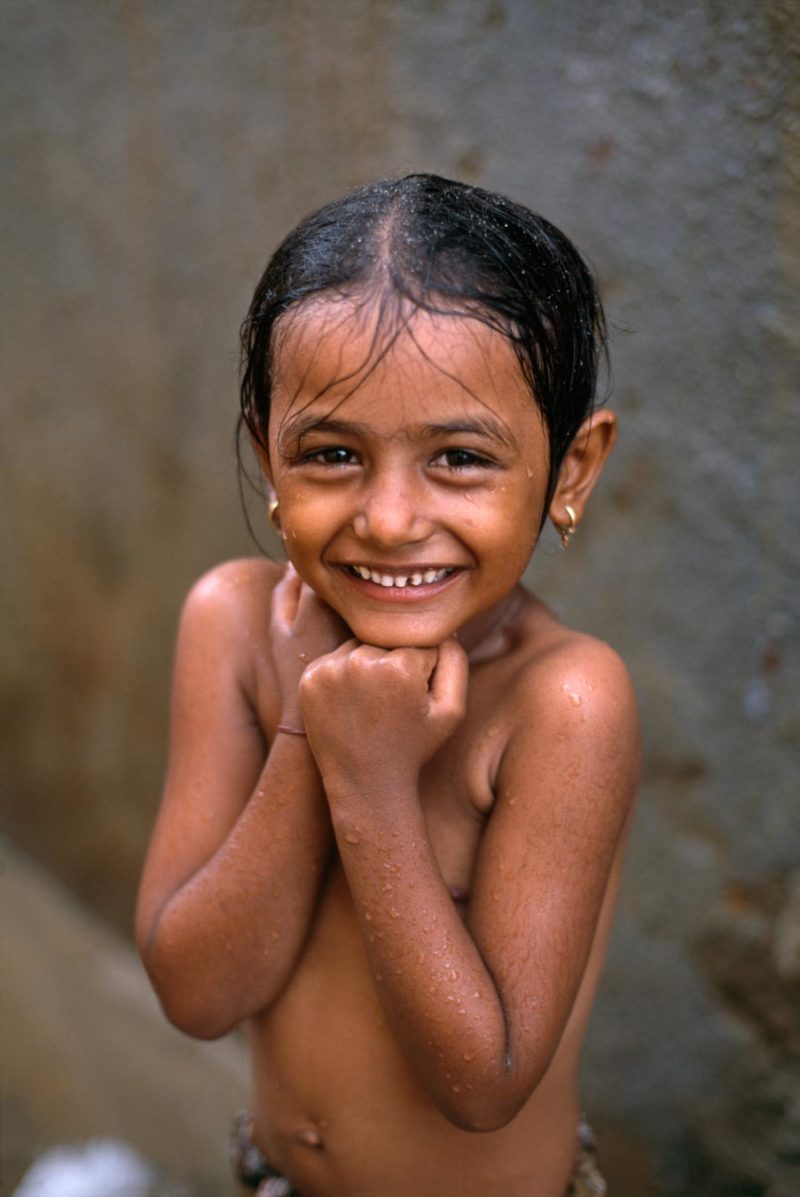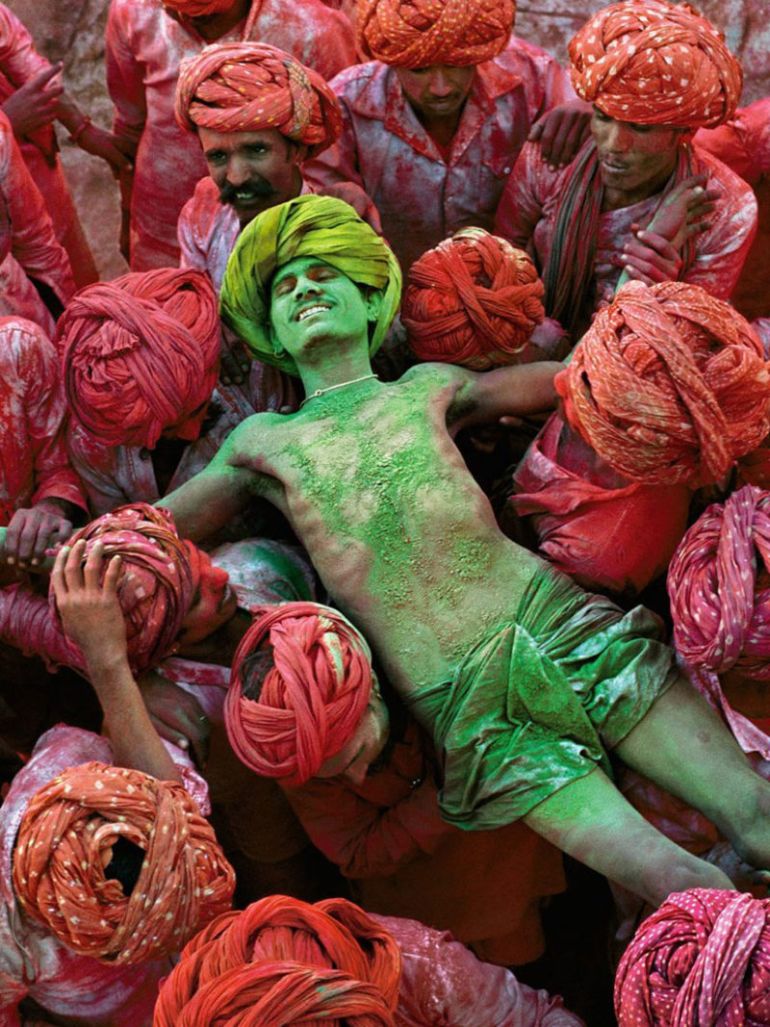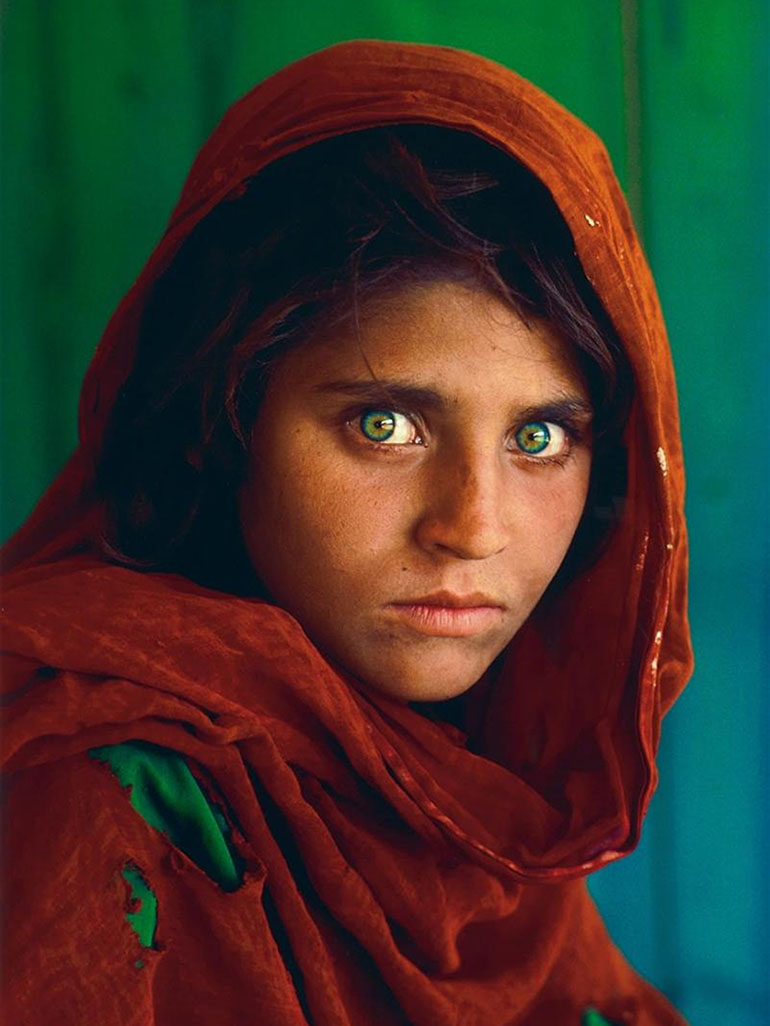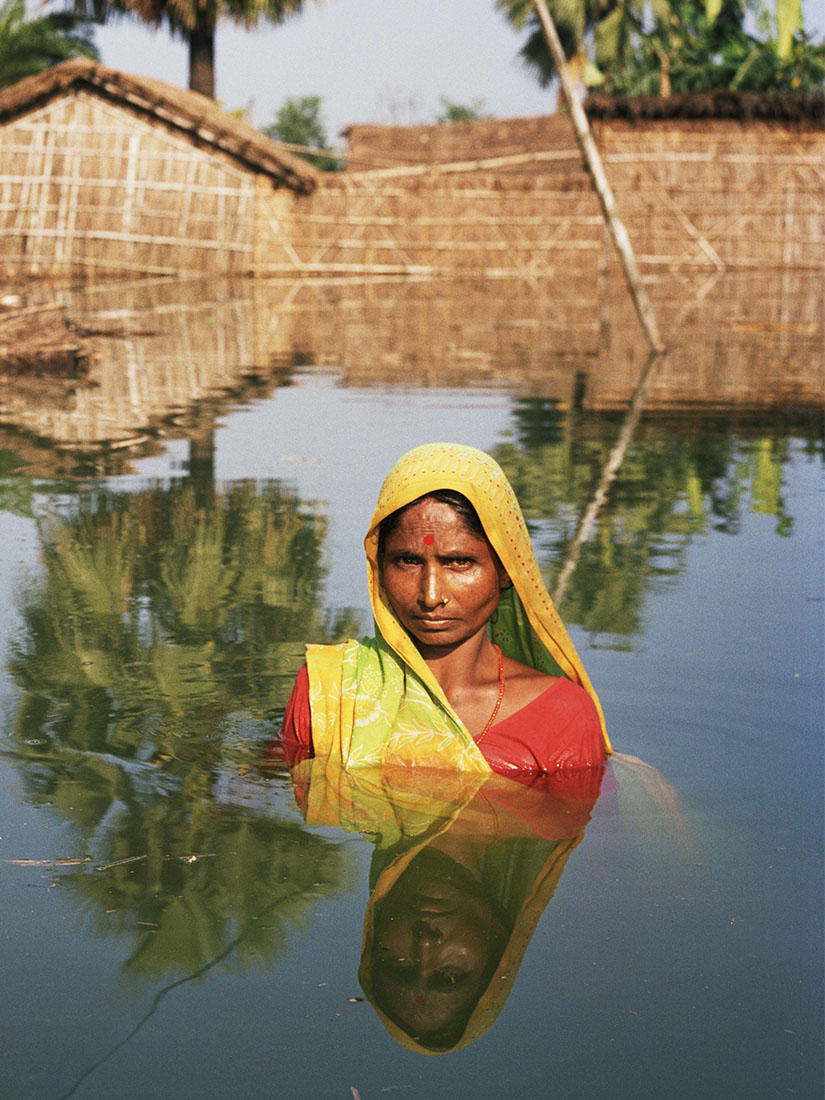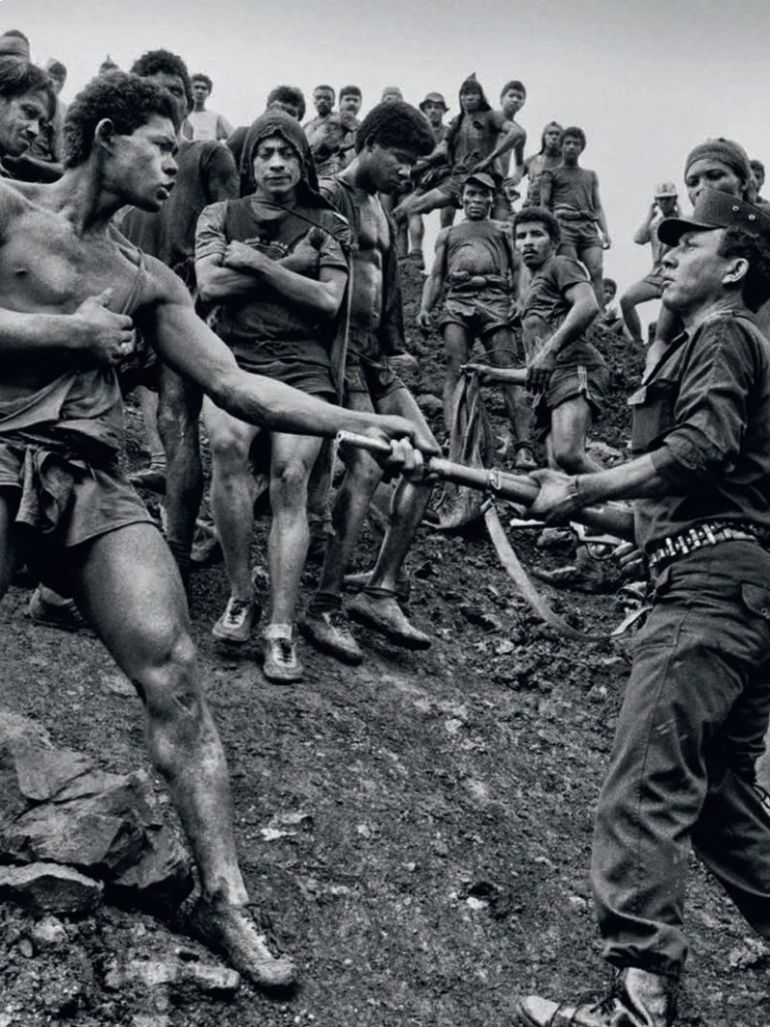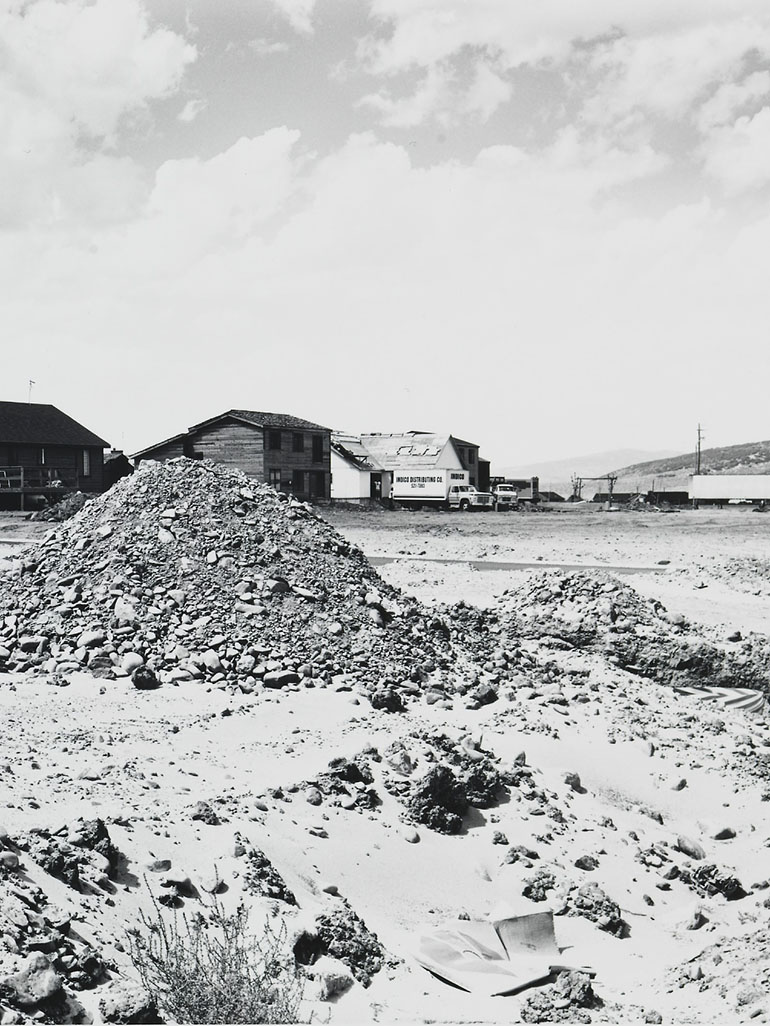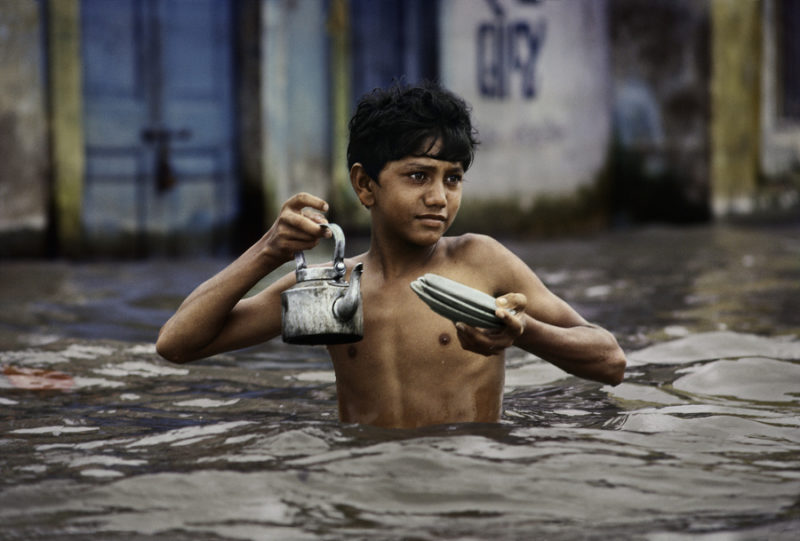
About Steve McCurry
Steve McCurry 1 is no stranger to success, having built a name for himself as one of the world’s most respected photographers 2. He has won numerous international awards and acclaim for his consistent and impactful repertoire and has sold books in the millions across the world. In particular, some of his most talked-about works are his Monsoon photographs.
What inspired him to become a photographer
McCurry aspired to be a successful photographer at a very early age after he saw a photo story in Life Magazine back in 1961 featuring the Indian 3 Monsoon as the subject. The photos had been taken by another famous photographer of that time, Brian Brake; McCurry was only 11 years old then. These images would stay with the photographer, guiding him later in his career path. It was not until 1983 that McCurry would venture off to Sri Lanka to photograph the Monsoon himself.
Steve McCurry’s Monsoon photos
When he set out for the very first time, McCurry was working for National Geographic. His first pictures of the monsoon helped establish him as one of the photographers to watch out for. Of course, as mentioned earlier, the photographers who came before him, such as Brake, often focused on meteorological events. Hence, he had to find a unique way to set himself apart as the new player.
McCurry, therefore, not only captured images of the monsoon but was also cautious about paying attention to other more complex details of how the monsoon affects the people who experience it and how those people cope with the often destructive weather phenomenon. For six months, McCurry followed the path of the monsoon from Southeast Asia 4 all the way to Northern Australia 5.
More than 80 visits to Asia
The result was a collection of photographs that were not only visually appealing but also devastatingly real. Since his first-ever Monsoon series, McCurry has made more than 80 more visits to Asia. The collection of images from his 30 years as a photojournalist features different subjects, including people and even steam engines making their way past the Taj Mahal.
Analysis
Vivid colors
One of the most striking aspects of Steve McCurry’s monsoon photographs is the use of vivid colors. Even amidst the gray backdrop of torrential rains, McCurry manages to capture the vibrant hues of South Asia. From the bright saris of women seeking shelter from the rain to the colorful facades of buildings reflecting in puddles, these colors become even more pronounced against the monsoon backdrop, encapsulating the vibrancy of life even in challenging times.
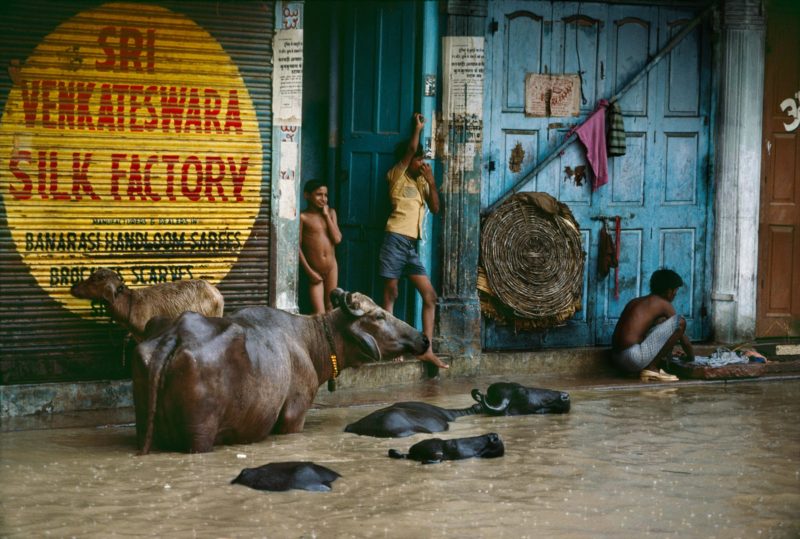
Human element
McCurry’s monsoon photos are deeply human-centric. He captures the myriad ways in which people interact with and are affected by the monsoon rains. Whether it’s children reveling in the joy of a sudden downpour, vendors trying to protect their goods, or families navigating flooded streets, McCurry’s lens focuses on the resilience and adaptability of people. These images serve as a testament to the human spirit’s ability to find moments of joy and normalcy even amidst nature’s fury.
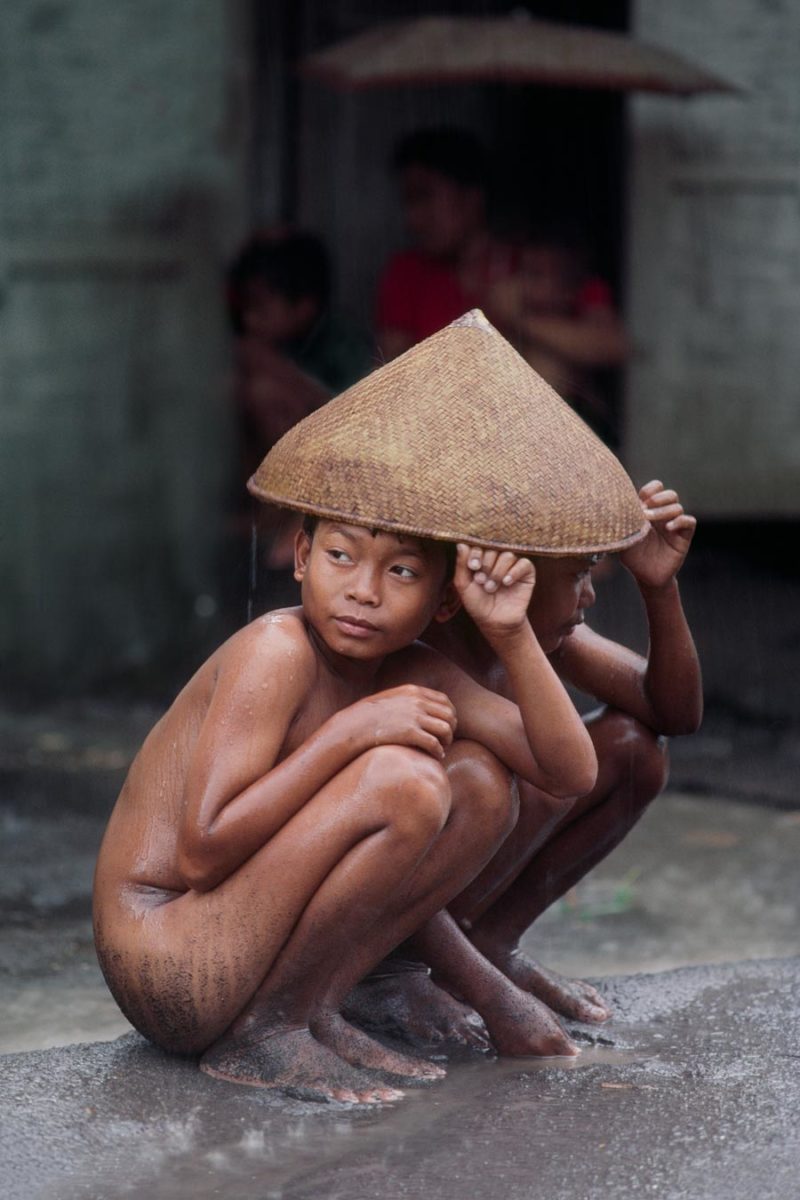
Emotion
The emotional depth in McCurry’s monsoon series is palpable. Each photograph tells a story of hope, despair, joy, or perseverance. The faces of his subjects often convey a myriad of emotions, from the weariness of a farmer looking at his flooded fields to the delight of children playing in rainwater. McCurry’s ability to capture these raw, unfiltered emotions makes his monsoon series deeply resonant and evocative.
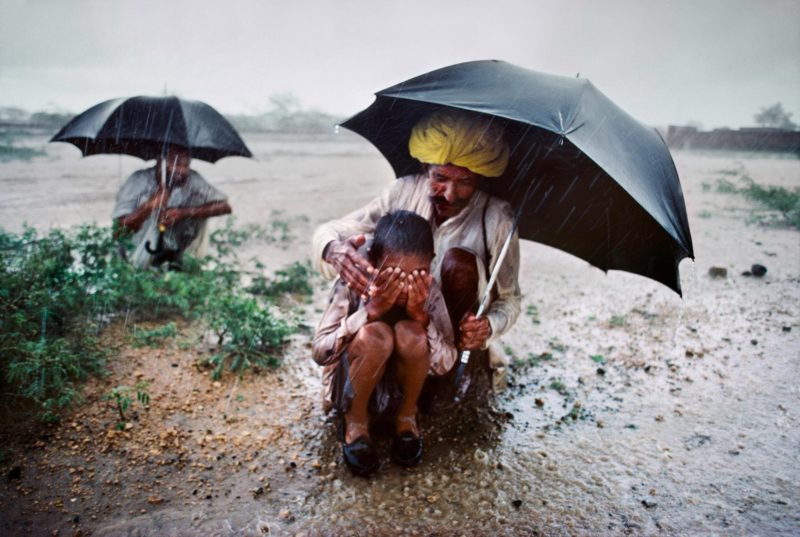
Composition
McCurry’s compositional prowess shines in his monsoon photos. He masterfully uses the elements of the monsoon – be it raindrops, flowing water 6, or stormy skies – to frame and compose his shots. The way he positions his subjects, often using natural lines or the rule of thirds, guides the viewer’s eye and emphasizes the narrative he wants to convey. This strong sense of composition transforms each photograph into a visual masterpiece.
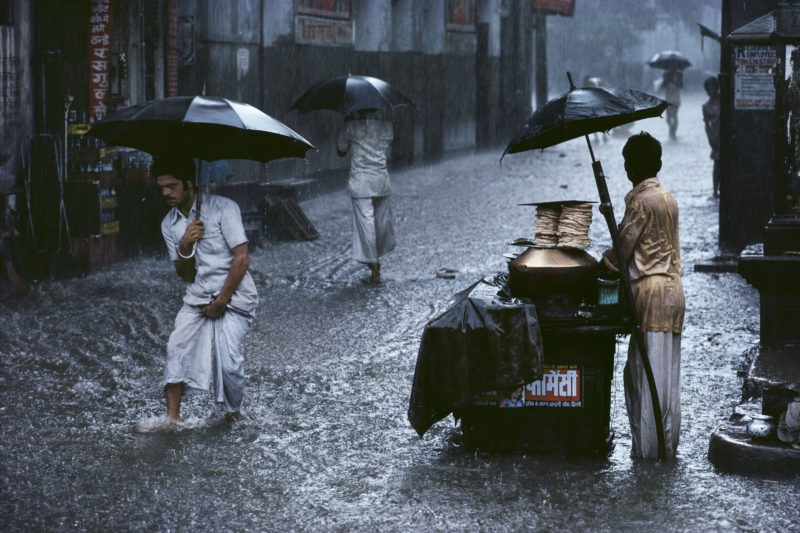
Storytelling
Every photograph in McCurry’s monsoon series tells a story. They are not just snapshots of a moment but narratives that provide a glimpse into the lives of people during the monsoon season. Whether it’s a family seeking shelter from a sudden downpour or a boatman navigating swollen rivers 7, each image offers insights into the challenges, joys, and intricacies of life during the monsoons in South Asia.
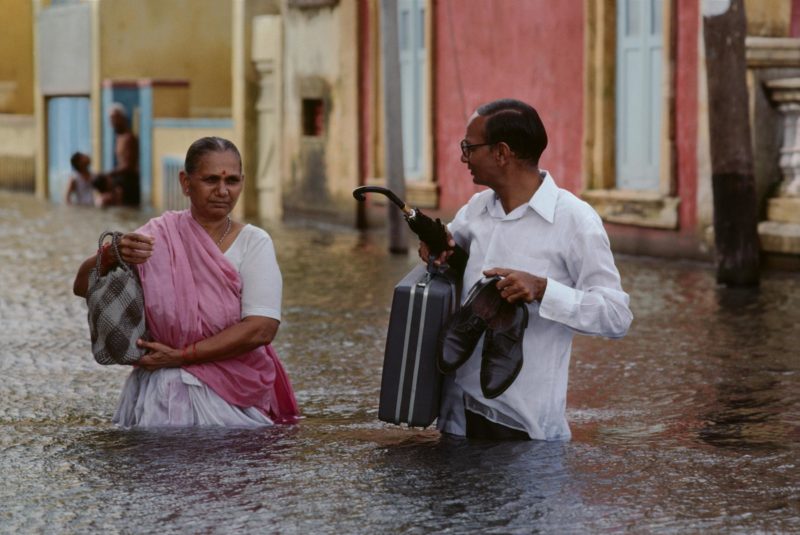
Contrast
The element of contrast is evident in many of McCurry’s monsoon photographs. He often juxtaposes the chaos of the monsoon with moments of stillness and serenity. A bustling market street suddenly silenced by a heavy downpour, or a solitary figure standing still amidst the rush of rain-soaked passersby. These contrasts not only add visual interest but also emphasize the unpredictability and duality of the monsoon season.
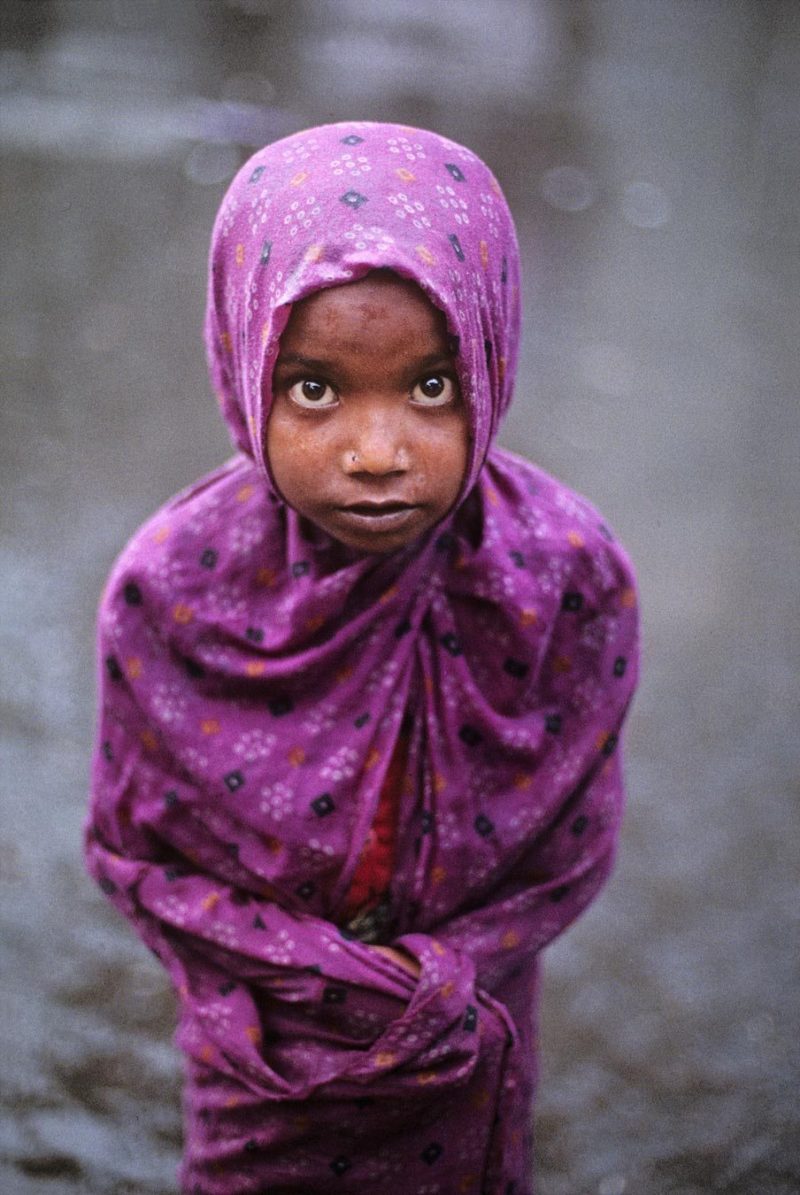
Cultural depth
McCurry’s photos are deeply rooted in the cultural fabric of South Asia. The monsoon, being an integral part of life in this region, influences many cultural practices and traditions. Through his lens, McCurry captures these nuances – festivals, rituals, and daily routines that are intertwined with the monsoon season. This cultural depth adds layers of meaning to his photographs, making them not just visually appealing but also culturally informative.
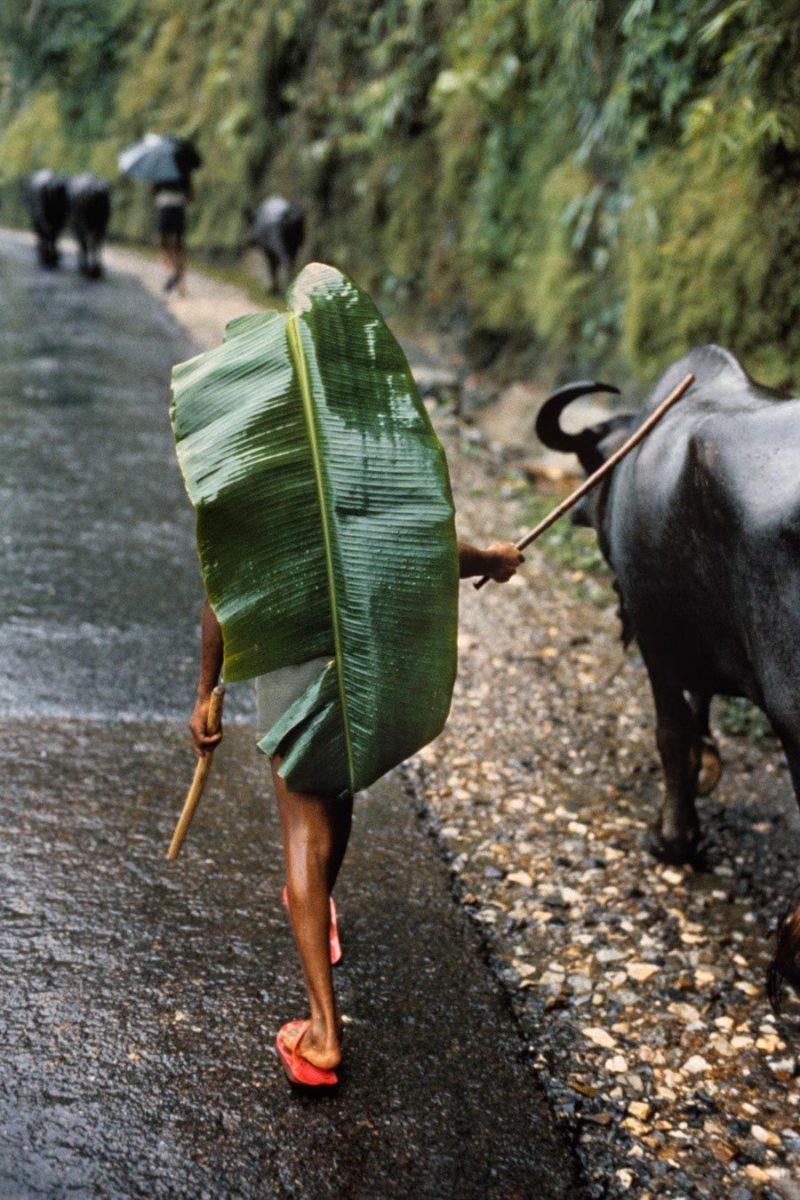
Environmental context
Beyond the human stories, McCurry’s monsoon photos also provide a broader environmental context. They showcase the transformative power of the monsoon on landscapes, from urban cityscapes with flooded streets to rural areas with overflowing rivers and lush green fields. These images highlight the sheer force of nature and its profound impact on the environment and human settlements.
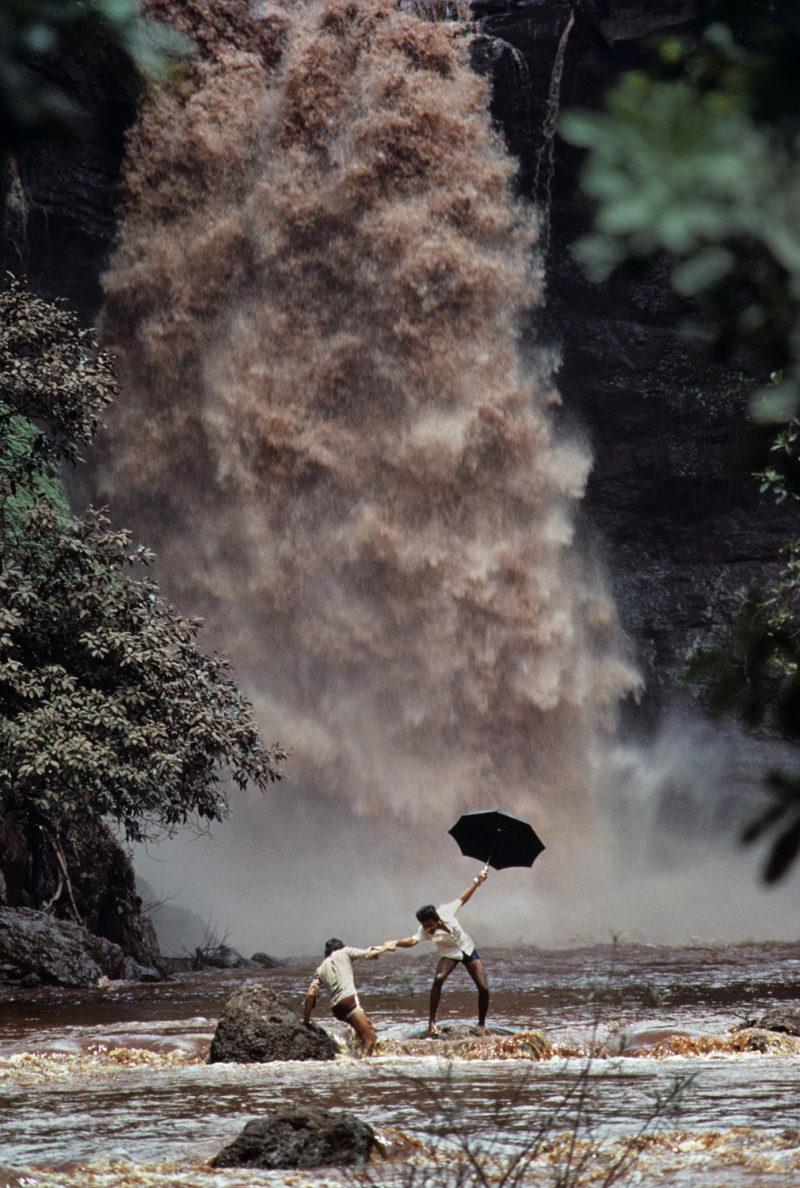
Dynamic movement
The dynamic movement of the monsoon is a recurring theme in McCurry’s photos. He captures the swirling winds, the rush of rainwater, and the hurried movements of people trying to find shelter. This sense of motion adds a kinetic energy to his photographs, making them feel alive and in the moment.

Intimacy
Despite the vastness of the monsoon phenomenon, there’s an intimacy in McCurry’s photographs. He often gets close to his subjects, capturing candid moments that feel personal and relatable. This intimacy bridges the gap between the viewer and the subject, making one feel as if they are right there, experiencing the monsoon alongside the people in the photographs.
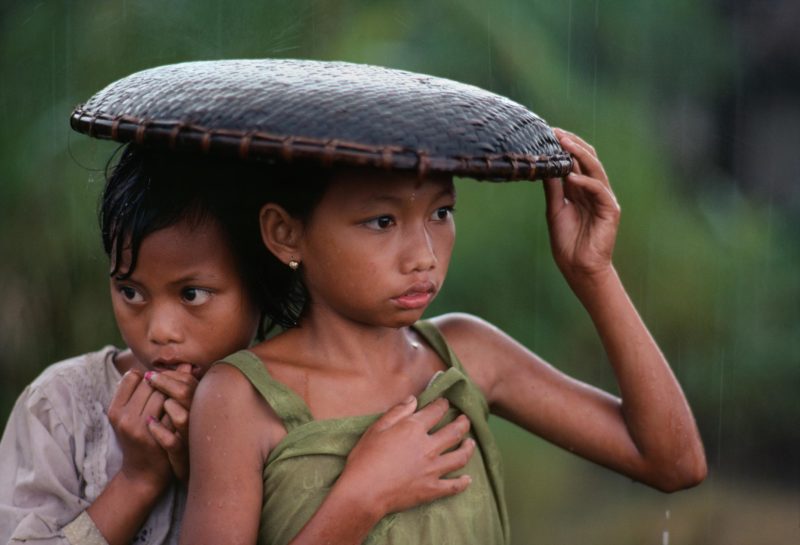
The iconic tailor photograph
While covering the monsoon in the submerged city of Porbandar, India, Steve McCurry captured a striking image of a man trudging through the floodwaters with a sewing machine perched on his shoulder. As McCurry aimed his lens, bystanders urged the man to smile, resulting in the subject’s broad grin.
The most heartwarming twist to this tale? The sewing machine’s manufacturer recognized their product in the photo, sought out the man, and gifted him a brand-new machine. McCurry reflects 8 9, “So it was really a wonderful way to actually help this man kind of indirectly.”
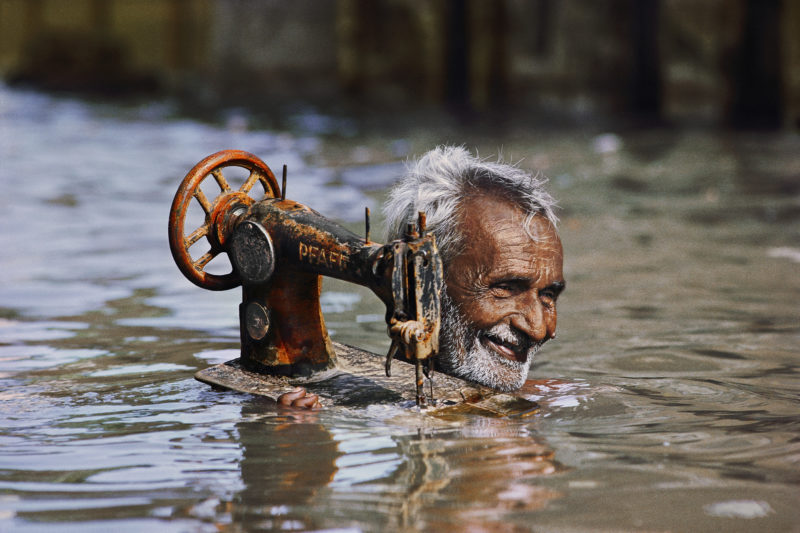
Video: Steve McCurry & The Last Roll of Kodachrome
Controversy & manipulation
Although no one can take McCurry’s success away, some of his most famous shots, including some from his book India by Rail, which appeared in National Geographic back in 1984, have recently been criticized for being staged and manipulated 10 11 by photo editing tools even though they were presented as documentary reportage.
While photo manipulation and editing are acceptable practices in commercial photography, it is not allowed in photojournalism, as the industry standard dictates that documentary photos reflect real-life situations.
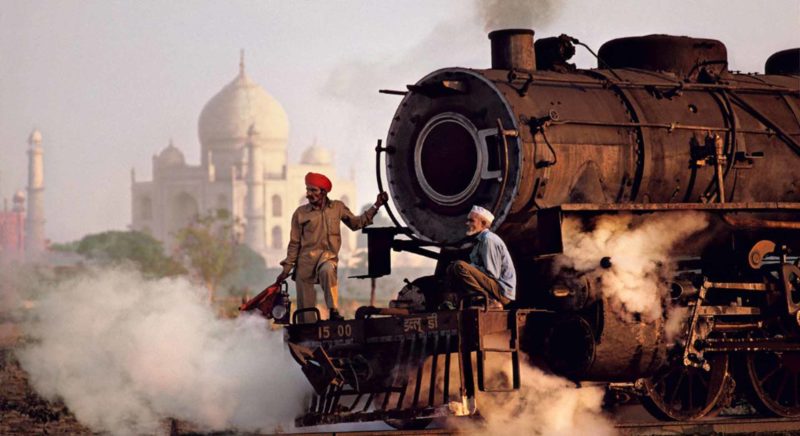
Final words
Steve McCurry’s monsoon photos are of paramount importance because they offer a profound and evocative portrayal of the monsoon season in South Asia, capturing its dual nature as both a life-giving force and a harbinger of chaos. Through his lens, McCurry delves deep into the human experience, showcasing resilience, joy, challenges, and adaptability of people amidst nature’s fury.
His vivid use of color, masterful composition, and ability to capture raw emotion transform these photographs into more than just visual records; they become powerful narratives that bridge cultural understanding, highlight human interconnectedness, and underscore the profound impact of the environment on daily life.
